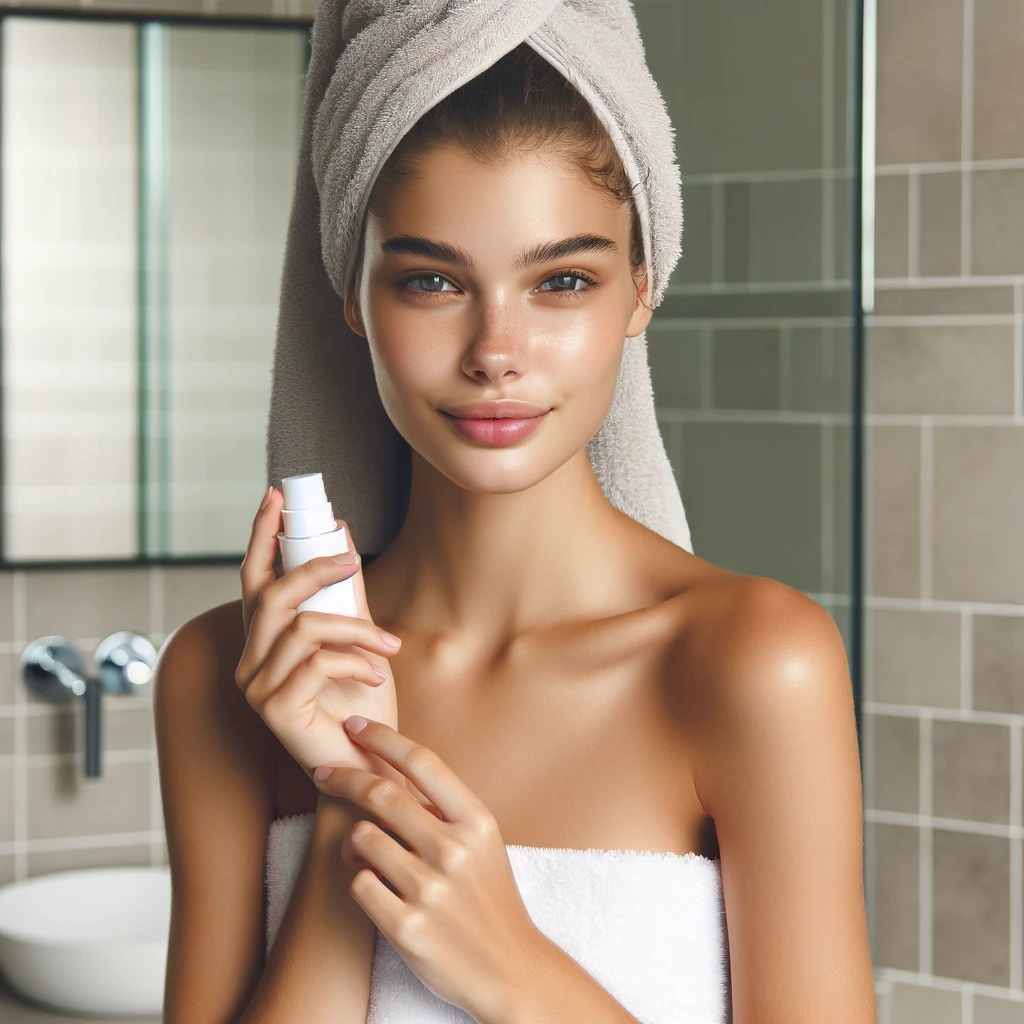¿Cuánta cantidad de champú utilizar?

In this article:
The ideal amount of shampoo to start with is about 10 milliliters or 2 full teaspoons.
However, the perfect amount for you could vary based on your hair's length, thickness, texture, the condition of your scalp, and the type of shampoo you use.
We'll delve into how these factors influence the amount of shampoo you should use ensuring you get just the right care for your hair.
How Much Shampoo to Use For Different Hair Types?
Here's a guide if youre asking how much shampoo should I use based on different hair characteristics:
- Thick Hair: For those with thick hair, you may need more than the standard 2 teaspoons, especially if your hair is also long to ensure the shampoo can reach all areas of your scalp and hair.
- Long Hair: Long hair requires incrementally more shampoo to ensure thorough coverage from roots to ends. Start with a quarter-sized amount and adjust as necessary, depending on your hair's thickness and texture.
- Curly Hair: Curly hair often needs less shampoo but more hydration. Use a nickel to a quarter-sized amount of a moisturizing shampoo to clean the scalp without stripping your curls of their natural oils.
- Short Hair: Short hair typically needs less shampoo. A nickel-sized amount should suffice to cleanse effectively without overdoing it.
- Dry or Damaged Hair: If your hair is dry or damaged, opt for a smaller amount of a hydrating, paraben-free shampoo. Shampooing less frequently, every 2-3 days, can help prevent further dryness.
- Oily Hair: For oily hair, a clarifying shampoo can work wonders. Use a nickel-sized amount once a week to remove excess oil and product buildup without over-stripping.
- Combination Hair: Combination hair benefits from a balanced approach. Use the recommended amount of shampoo, focusing on the roots, and avoid washing too often. Always follow up with conditioner to maintain moisture balance.

Different Types of Shampoo and The Correct Amount
Let's break down the correct amount for different types of shampoo, ensuring you're using just the right amount for effective washing.
- Regular Shampoo: Designed for those with normal hair, a nickel-sized amount of regular shampoo is typically sufficient to cleanse effectively without overdoing it.
- Color-Safe Shampoo: For those with color-treated hair, color-safe shampoos are formulated with gentle cleansers to protect your hair color. A nickel-sized amount used two to three times a week will help maintain your color's vibrancy.
- Moisturizing Shampoo: Individuals with dry, damaged, or frizzy hair should opt for a moisturizing shampoo. Due to its rich ingredients like oils and humectants, a quarter-sized amount (or more for thicker hair) is advisable to provide adequate hydration.
- Organic Shampoo: Organic shampoos, made with natural ingredients, are ideal for people with allergies or sensitive skin. Use these gentle shampoos in the same quantity as regular shampoo, adjusting the amount based on your hair's length and thickness.
- Anti-dandruff Shampoo: For those dealing with flaking and dandruff, anti-dandruff shampoos can be used in a quarter-sized amount two to three times a week or as recommended by a healthcare provider, depending on hair thickness and length.
- Dry Shampoo: Dry shampoo comes in handy for absorbing excess sebum. It should be sprayed directly onto the roots from about 4 inches away. Work in sections to ensure thorough coverage without using too much product.
- Medicated Shampoo: Medicated shampoos target specific scalp conditions and contain active ingredients for treatment. The amount used should adhere strictly to the directions provided on the bottle or by a healthcare professional, as it varies by condition and treatment needs.
When is it Okay to Double Shampoo?
Double shampooing is recommended in the following situations:
- Heavy Styling Product Use: Ideal for removing buildup from gels, waxes, or pomades.
- After Using Dry Shampoo: Clears out dry shampoo residue effectively.
- Very Oily Scalp: Helps in managing excess oil for a cleaner scalp.
- Exposure to Pollutants: Ensures removal of pollutants and dust from the hair and scalp.
- Infrequent Washing: Beneficial for those who wash their hair less often, thoroughly cleansing accumulated dirt and oils.

Signs That You Are Using Too Much/Little Shampoo
Signs of
Signs of Using Too Much Shampoo:
- Dry, Brittle Hair: If your hair feels excessively dry or brittle, you might be using too much shampoo, stripping away natural oils
- Scalp Irritation: An irritated or flaky scalp can also indicate overuse of shampoo, especially if using types that are harsh on your skin.
Signs of Using Too Little Shampoo:
- Oily Scalp and Hair: An oily scalp or hair even after washing could mean you're not using enough shampoo to effectively break down and remove oils.
- Product Buildup: If your hair feels weighed down or you notice residue, it's a sign you might be under-shampooing, leaving behind product buildup.
Consequences:
- Over-Shampooing can lead to a lack of moisture, causing hair to become fragile and prone to breakage. In the long term, it might also affect the health of your scalp, leading to irritation or dandruff.
- Under-Shampooing can result in an oily scalp, dandruff, and even scalp acne due to the accumulation of oils and products. It can also impact your hair's appearance, making it look greasy or limp.
How to Use Shampoo Correctly Not to Waste It
Here's a simple, step-by-step guide to effective shampooing:
- Pre-rinse Your Hair: Start by thoroughly soaking your hair with water for a minute or two before applying any shampoo.
- Emulsify the Shampoo: Instead of applying shampoo directly to your head from the bottle, pour the correct amount onto your palms. Rub your hands together to emulsify the shampoo, then apply it to your scalp.
- Start at the Nape: Begin applying the shampoo at the nape of your neck, where hair tends to be thickest. Use your fingertips (not nails) to gently massage the shampoo into your scalp in circular motions, moving towards the front of your hairline.
- Massage Your Scalp: Spend about two minutes massaging the shampoo into your scalp. This not only helps to cleanse thoroughly but also boosts circulation, which is beneficial for hair growth and shine.
- Rinse Thoroughly: Rinse your hair until the water runs clear. Make sure to remove all traces of shampoo to avoid residue build-up.
- Water Temperature: Use lukewarm water for both rinsing and washing. Hot water can strip your hair of essential oils, leading to dryness, while cold water might not effectively remove dirt and oil.

How Often to Shampoo Hair?
To find the right shampooing frequency, consider your hair type and condition:
- Oily Hair: May require daily shampooing.
- Dry/Curly Hair: Once a week or less is often enough.
- Normal Hair: Shampooing 2-3 times a week works well.
Final Thoughts
Understanding the nuances of shampooing—how much to use, the type of shampoo best suited for your hair, the right frequency of washing, and the proper technique—can significantly impact your hair's health and appearance.
Luxe-Cosmetics Hair Growth Shampoo, and for dry or damaged hair, Luxe-Cosmetics Hydrate & Repair Shampoo offers deep hydration and repair. These products support a balanced approach to hair care, promoting healthy, vibrant hair.

Josef Mohamed
Josef Mohamed is a Content Marketer and Web Designer with over 6 years of experience.He brings a wealth of knowledge to his work, making him a reliable source for readers interested in practical insights about beauty.His writing style is straightforward, aiming to provide real facts and avoid common myths in the beauty industry.




